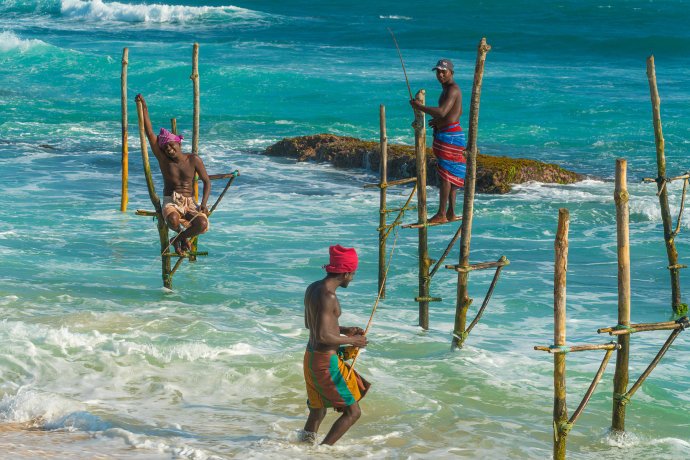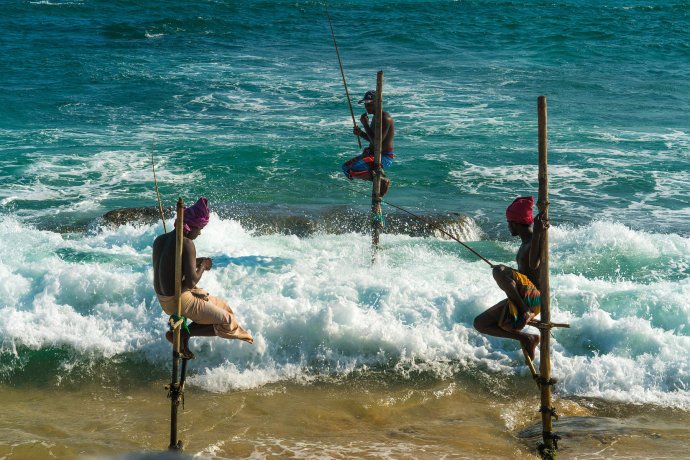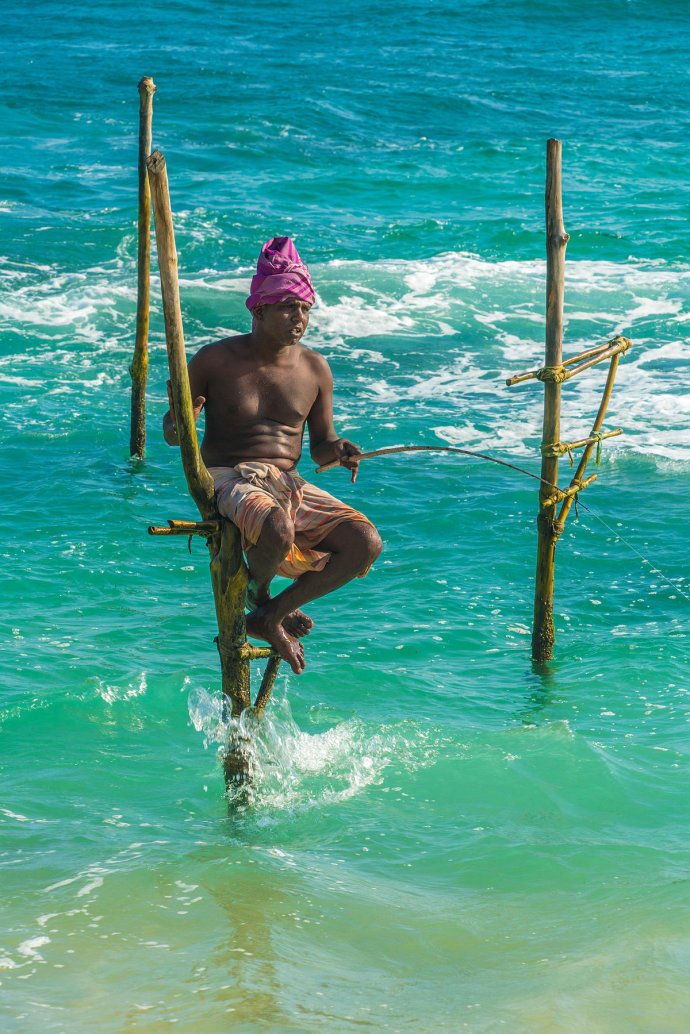In the southwest of Sri Lanka, Mirissa to the cale area, there are fishermen's generation of fishing methods called "stilt fishing", known as the world's strangest and most cattle fishing. There are about 500 families in stilts fishing here. Every stilt pole is a treasure handed down from generation to generation. Every morning or evening, after the sea is ebbing, fishermen will climb up the stilts on the shallow sea and begin fishing. They put the fishing rod into the water, without bait, as long as you can hook finger sized sardine catch. They often sit on stilts for hours, and even if the wind surges, they will sit on the Diaoyutai.
The harvest of stilts fishing is mainly from home, because even during peak season, the number of hooks is limited. If they have extra food to eat, they usually use bamboo sticks to string up and sell them to the fair. After the India Ocean tsunami in 2004, the local fishery was seriously affected and the fishing income declined. This generation of fishing methods, the fishermen were no longer passed to their children, and developed into a tourist fee performance, or invited tourists to take a stilt to take a photo to earn a tip, which was more profitable.
中文:
在斯里兰卡最西南的美蕊沙到加勒一带有种渔民世代相传的捕鱼方法叫“高跷钓鱼”,号称是世界上最奇特最牛的捕鱼方式。这里大约有500个从事高跷捕鱼的家庭,每根高跷木杆都是家族世代相传下来的宝物。每天清晨或黄昏海水退潮后,渔民们便会麻利的爬上耸立在浅海边的高跷木杆上开始钓鱼。他们把鱼竿抛到海水里,无需鱼饵,只要鱼钩就可以将指头大小的沙丁鱼钓上来。他们常常在高跷上一坐就是好几个小时,即使风大浪涌,也稳坐“钓鱼台”。
高跷钓鱼的收获主要是自家吃,因为即使在旺季,上钩的鱼儿数量也是有限的。如果自家吃有多余,他们则通常用竹签串上,拿到集市去卖。2004年印度洋海啸之后,当地渔业受到严重影响,渔业收入下降,这种代代相传的钓鱼方法,渔民们不再传给孩子,而发展成了一种旅游观光收费表演,或邀请游客蹬高跷拍照,以赚取小费,这样更加有利可图。
Good Luck & All the Best祝好运和万事如意


